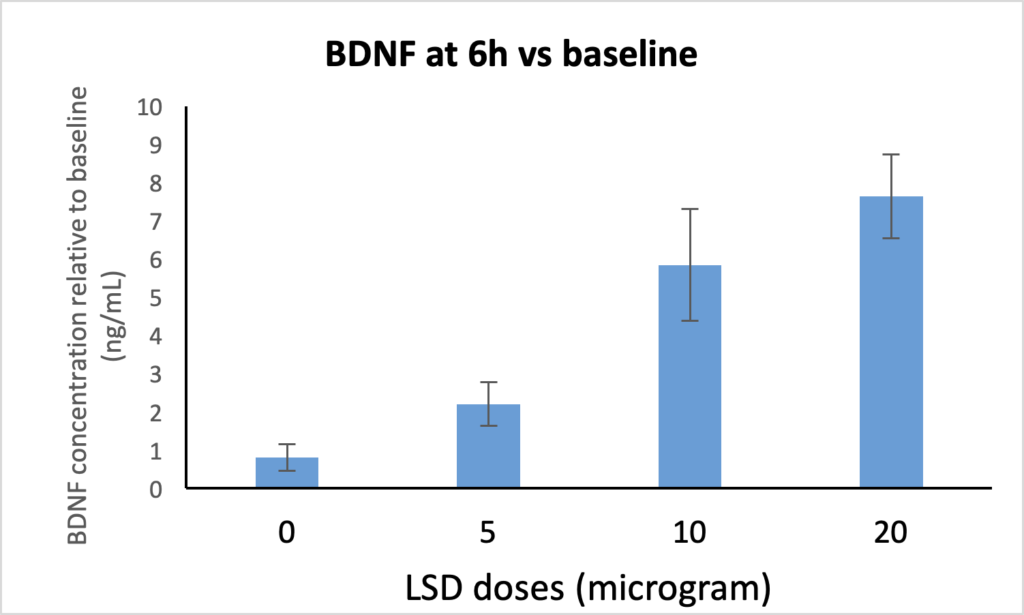Psychedelics and neuroplasticity
For many years, it was believed that the brain did not make major changes after a certain point in time. Today, we know that the brain is actually capable of changing and developing throughout a lifetime. It is plastic or malleable, and the term neuroplasticity is used to describe this tendency for the brain to keep developing, changing, and potentially healing itself.
Preclinical research has demonstrated that psychedelic substances, including LSD, psilocybin and DMT, as well as alkaloids present in ayahuasca (harmine, tetrahydroharmine, and harmaline) affect neuroplasticity after acute and chronic administration.
A recent in vitro study in cultured cortical neurons of animals showed increased formation of new neurites, as expressed by the number of dendritic branches, the total length of the arbors, and formation of synapses, after extended (24 h) treatment with a range of psychedelics like DOI, LSD, and DMT. While these effects were similar across psychedelic classes and the dissociative ketamine, LSD was the most potent.
In light of the increased scientific interest in using low psychedelic doses, (aka microdosing), preclinical work with DMT has also shown that neuroplastic changes even take place after administration of low DMT doses that are considered to be sub-hallucinogenic.
In humans, neuroplasticity can be reflected by the presence of Brain Derived Neurotropic Factor (BDNF) in blood plasma. BDNF is a protein that is in part responsible for regulating the processes of cell birth, cell growth and cell death in the brain.
What is BDNF?
Brain-derived neurotrophic factor (BDNF), is a protein found in the brain and the periphery. BDNF acts on certain neurons of the central nervous system and the peripheral nervous system, helping to support survival of existing neurons, and encouraging growth and differentiation of new neurons and synapses.
Involvement in pathophysiologies
Various studies have shown possible links between BDNF and conditions such as depression, obsessive-compulsive disorder Alzheimer’s disease, Diabetes, Huntington’s disease, Rett syndrome, and dementia, as well as anorexia nervosa and bulimia nervosa.
Conversely, higher levels of the protein are associated with improved cognitive functioning, mental health, and short- and long-term memory.
Our research on LSD microdosing and BDNF
Given the interest in BDNF as a key player in several neurodegenerative and neuropsychiatric disorders and preclinical data showing psychedelics induced neuroplasticity even at low doses of psychedelics, our Beckley/Maastricht dose-finding microdosing study included, among other measures, that of changes in BDNF plasma levels following low doses of LSD (5, 10, and 20 μg) and a placebo, in healthy volunteers.
The findings demonstrated an increase in BDNF blood plasma levels starting 4h after LSD administration. 6h after administration, the plasma level of BDNF was proportionate to the dose of LSD administered.

The finding that LSD acutely increases BDNF levels warrants studies in patient populations.
Our repeated microdosing study is also looking at the effects of LSD microdosing on neuroplasticity using measures of BDNF and EEG.
Read the full research article here.
Support our research, donate today.
Podcast
- All
Links
- All
Support
- All
BIPRP
- All
Science Talk
- All
Amanda's Talks
- All
- Video Talk
- Featured
- 2016 Onwards
- 2011-2015
- 2010 and Earlier
- Science Talk
- Policy Talk
One-pager
- All
Music
- All
Amanda Feilding
- All
Events
- All
Highlights
- All
Psilocybin for Depression
- All
Current
- All
Category
- All
- Science
- Policy
- Culture
Substance/Method
- All
- Opiates
- Novel Psychoactive Substances
- Meditation
- Trepanation
- LSD
- Psilocybin
- Cannabis/cannabinoids
- Ayahuasca/DMT
- Coca/Cocaine
- MDMA
Collaboration
- All
- Beckley/Brazil Research Programme
- Beckley/Maastricht Research Programme
- Exeter University
- ICEERS
- Beckley/Sant Pau Research Programme
- University College London
- New York University
- Cardiff University
- Madrid Computense University
- Ethnobotanicals Research Programme
- Freiburg University
- Medical Office for Psychiatry and Psychotherapy, Solothurn
- Beckley/Sechenov Institute Research programme
- Hannover Medical School
- Beckley/Imperial Research Programme
- King's College London
- Johns Hopkins University
Clinical Application
- All
- Depression
- Addictions
- Anxiety
- Psychosis
- PTSD
- Cancer
- Cluster Headaches
Policy Focus
- All
- Policy Reports
- Advisory Work
- Seminar Series
- Advocacy/Campaigns
Type of publication
- All
- Original research
- Report
- Review
- Opinion/Correspondence
- Book
- Book chapter
- Conference abstract
- Petition/campaign
Search type
